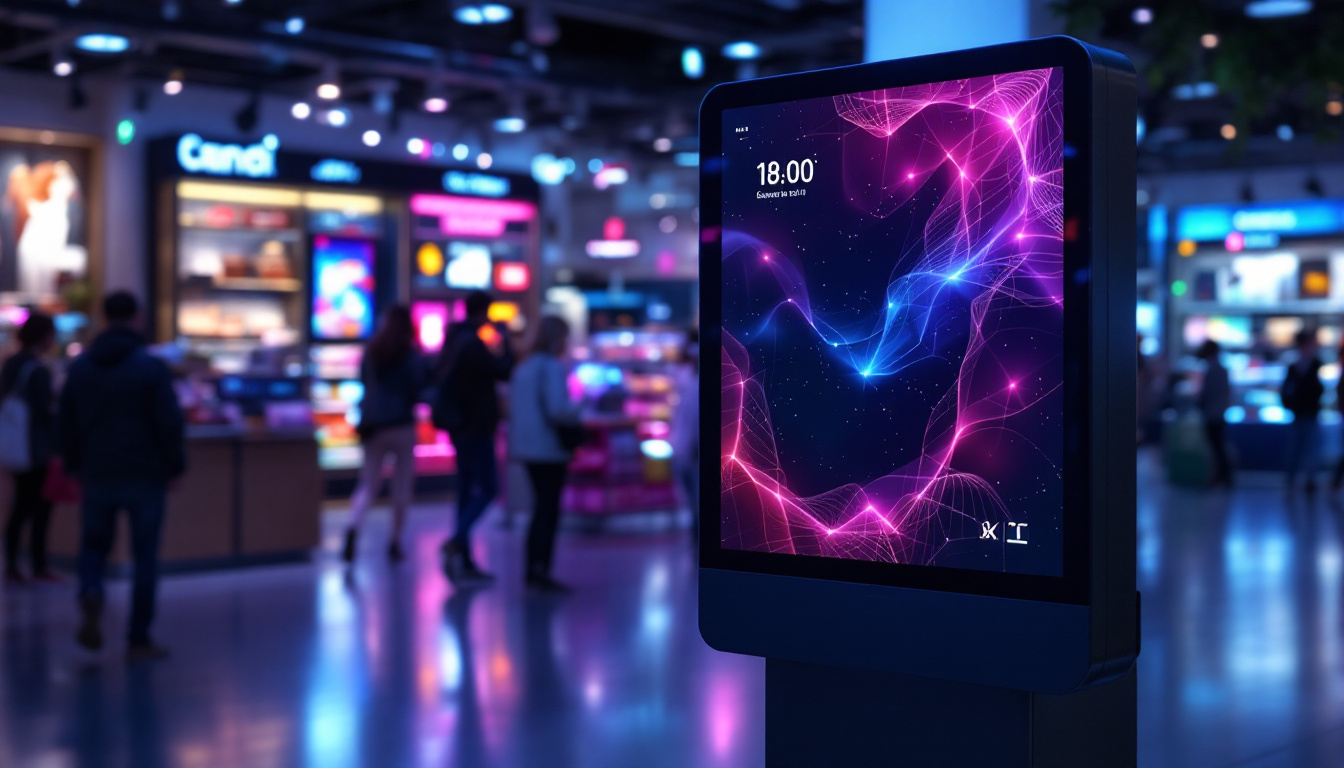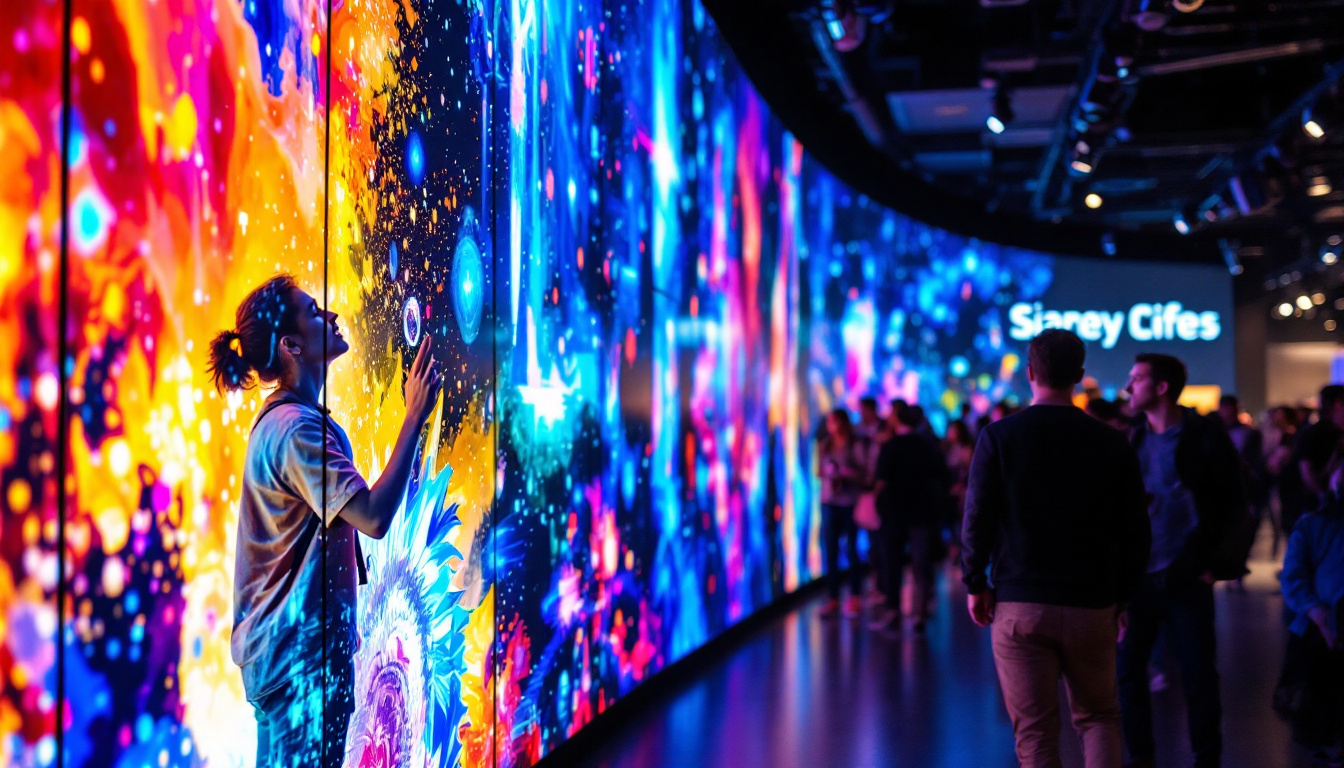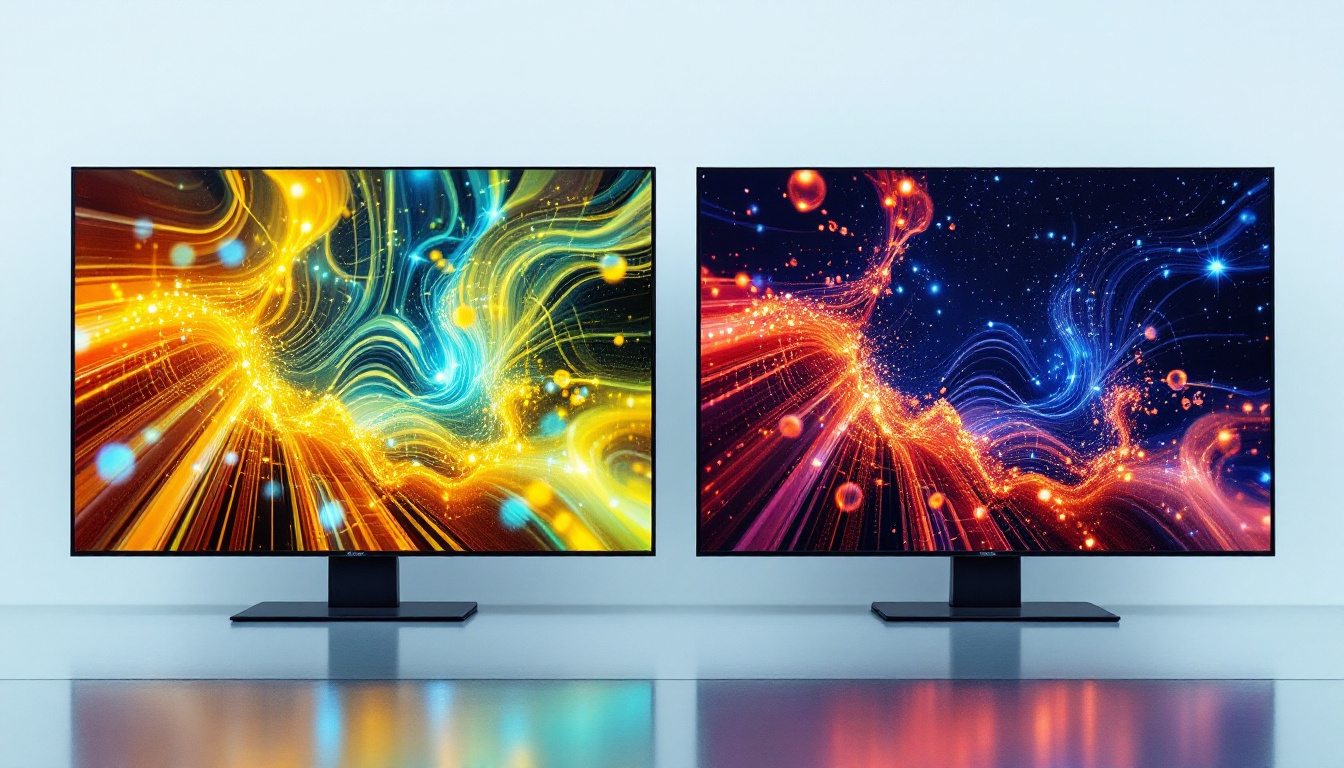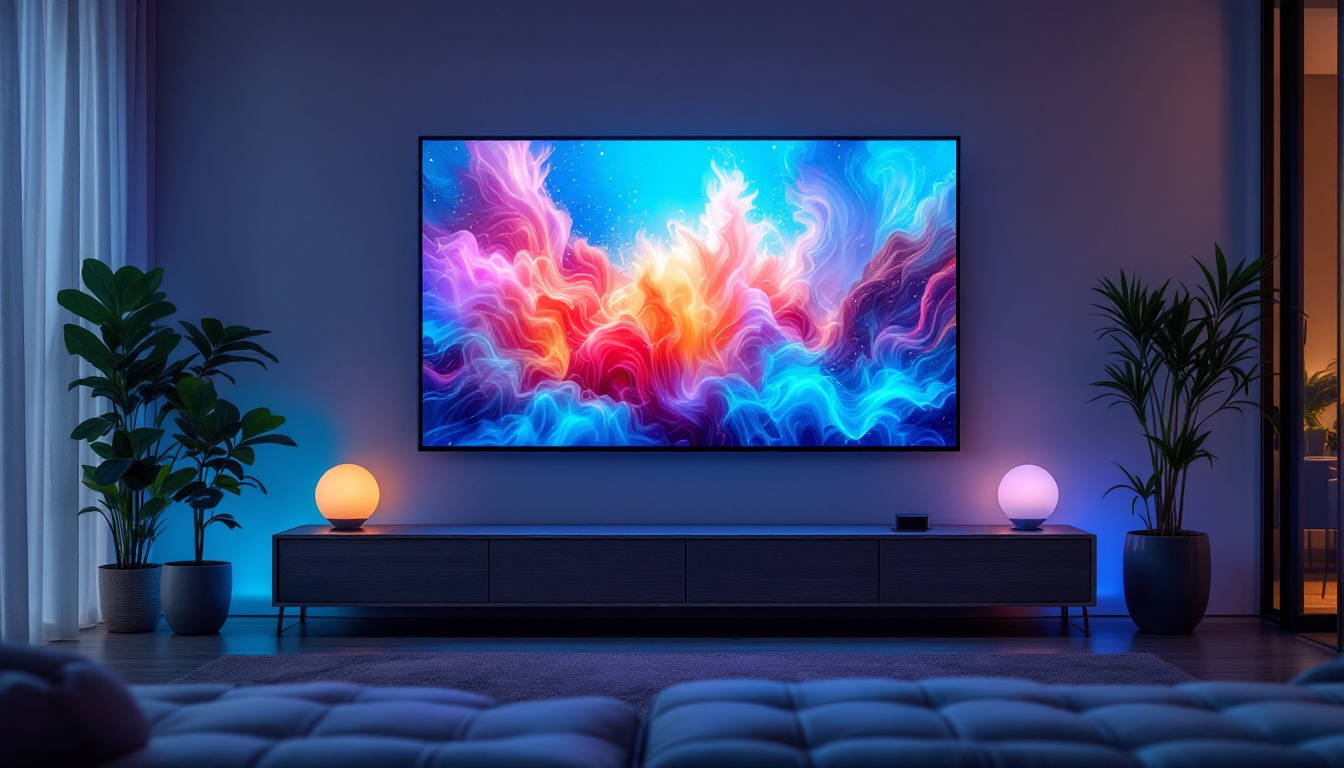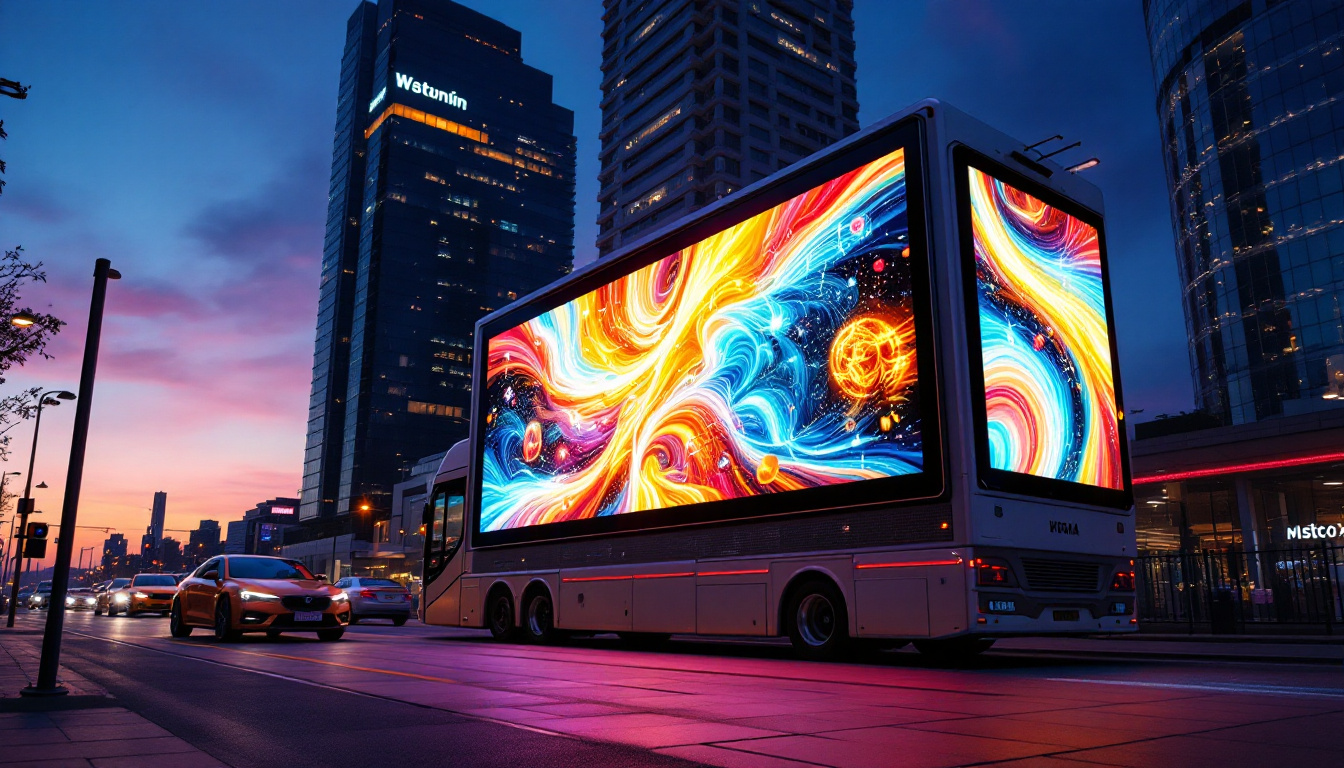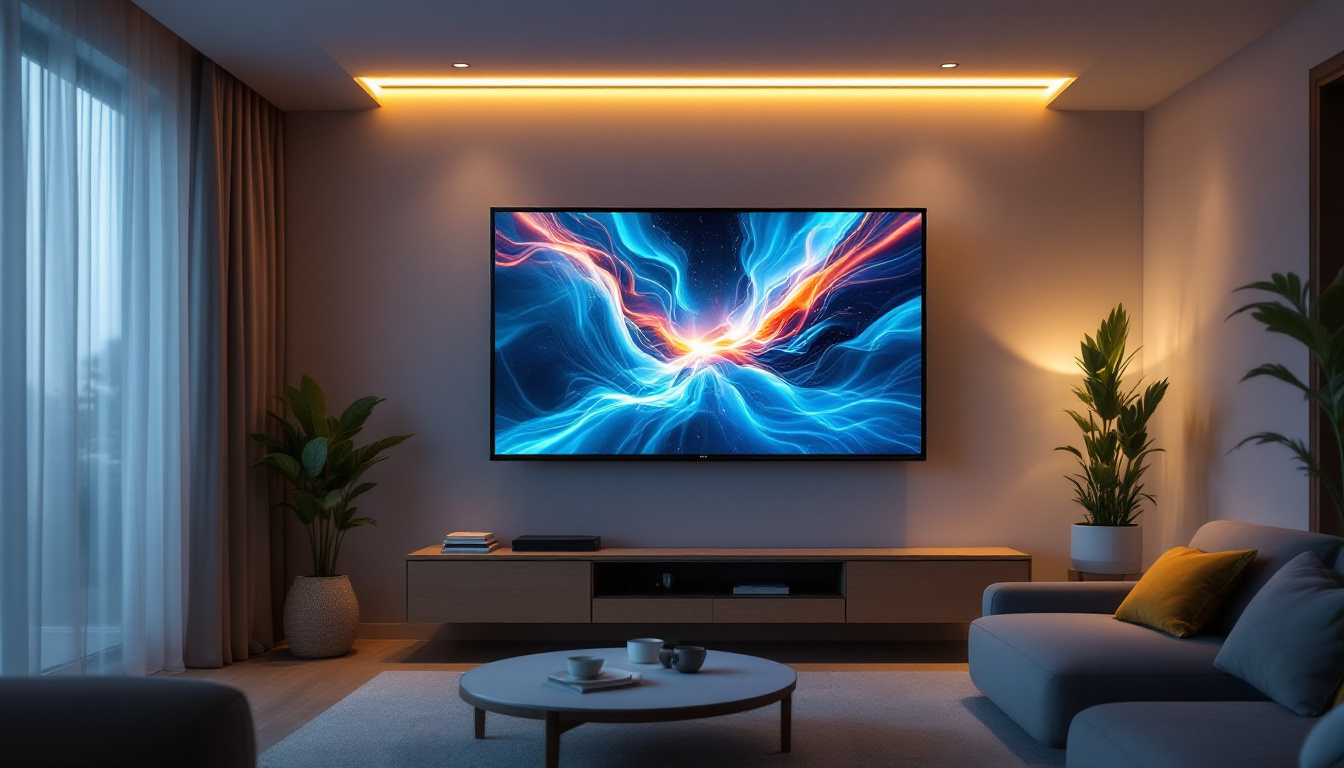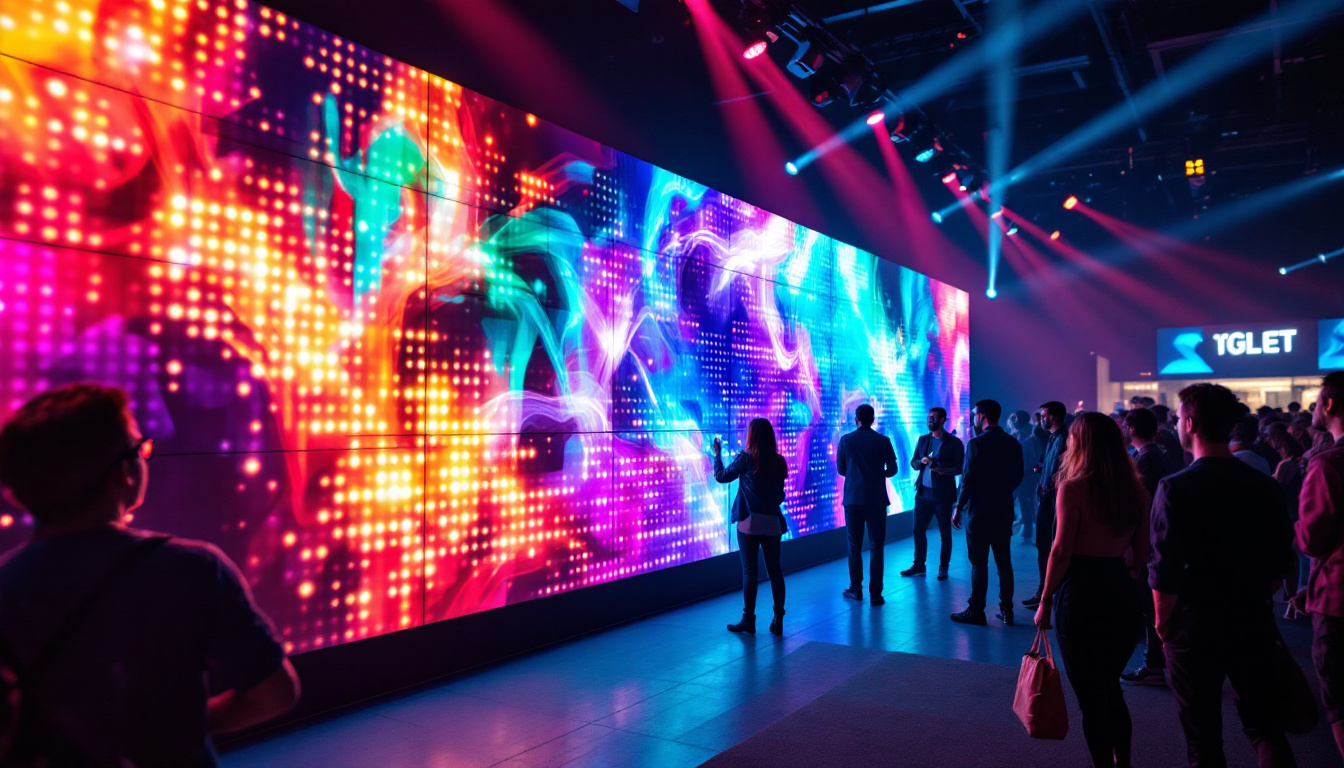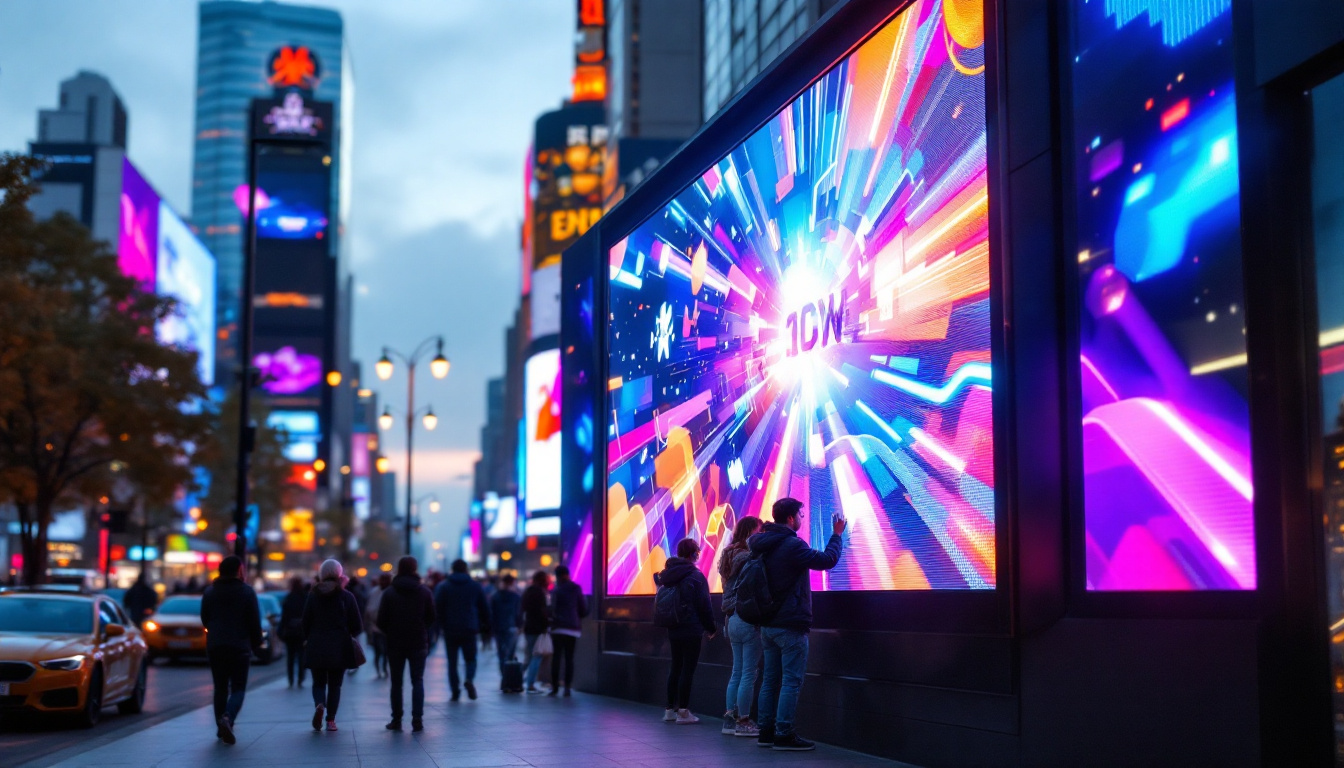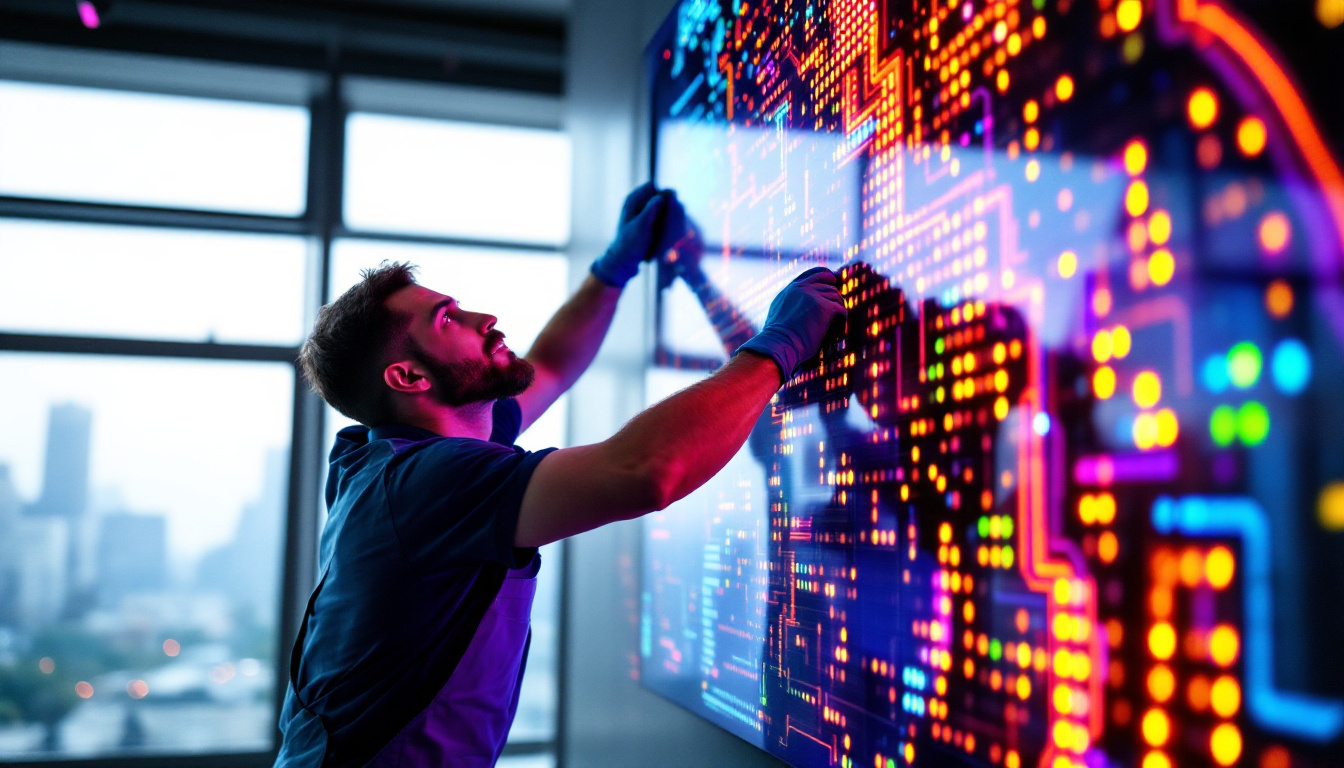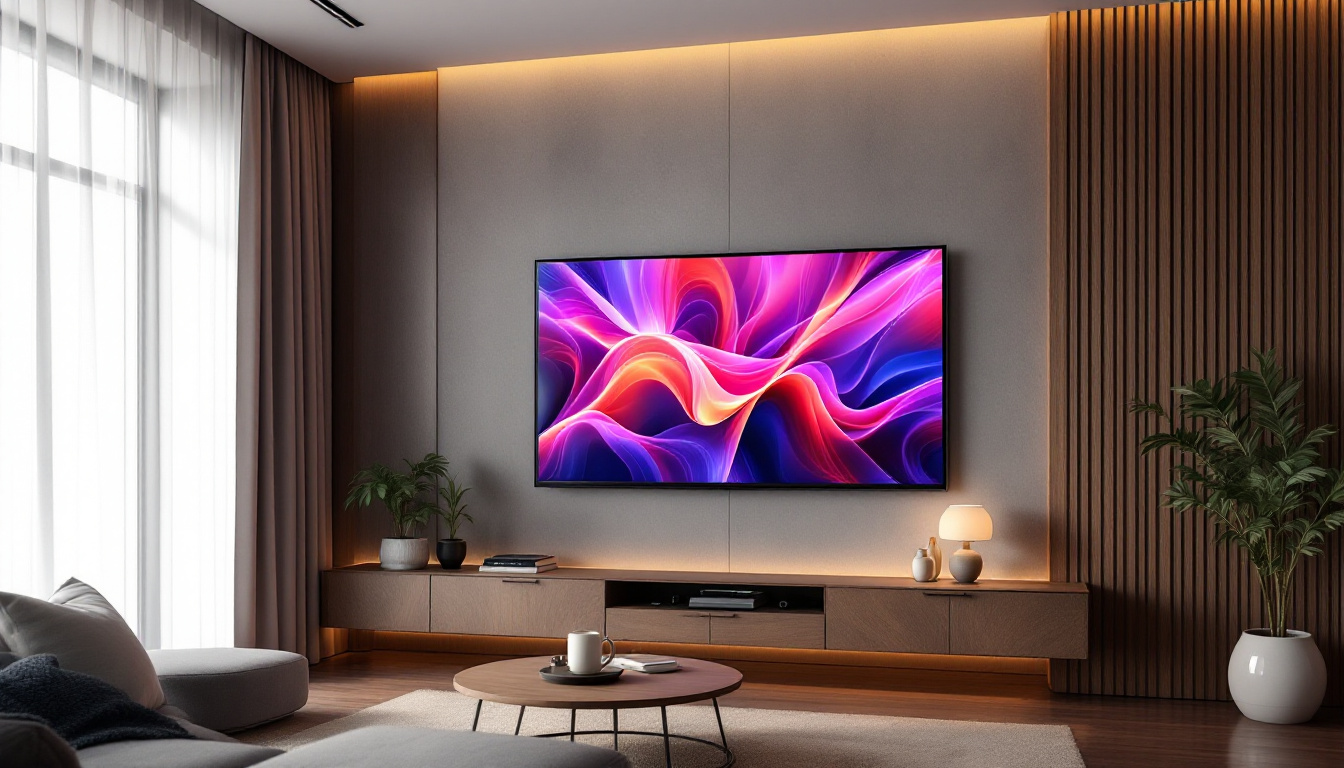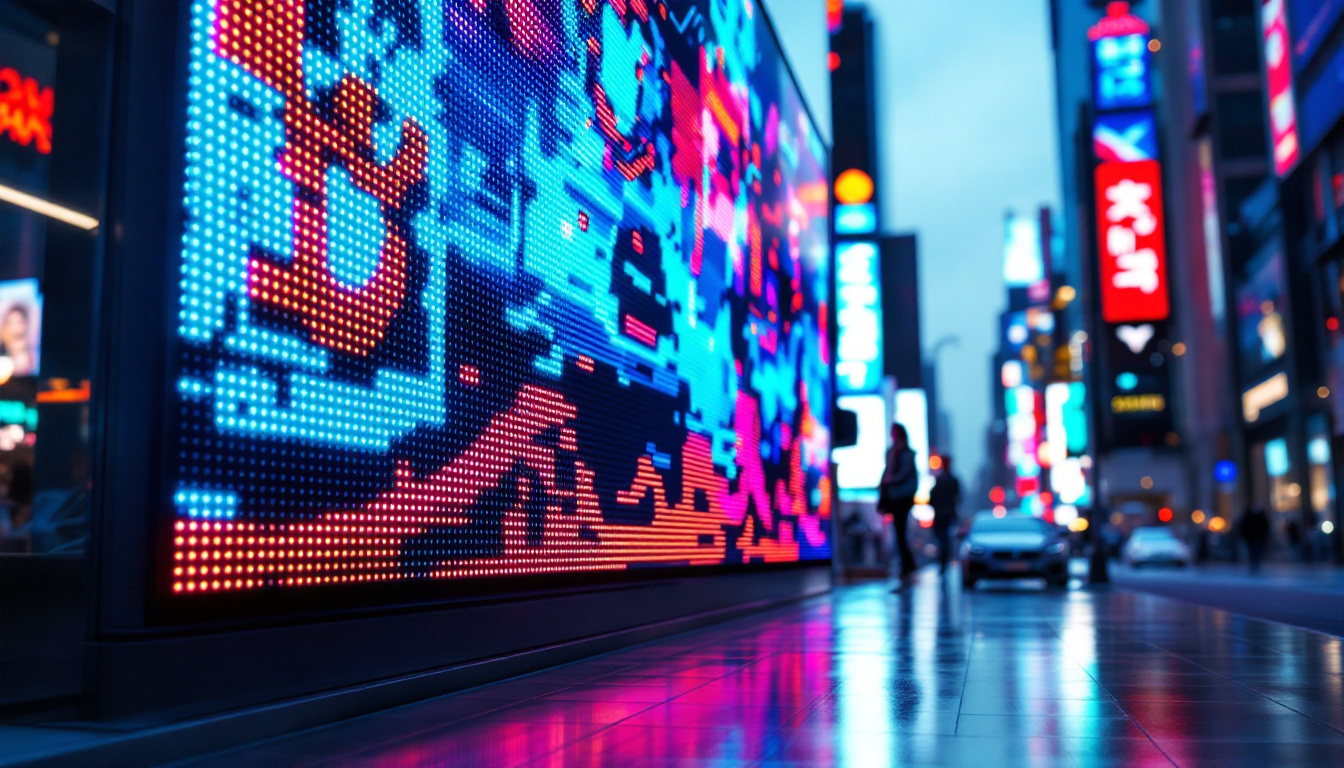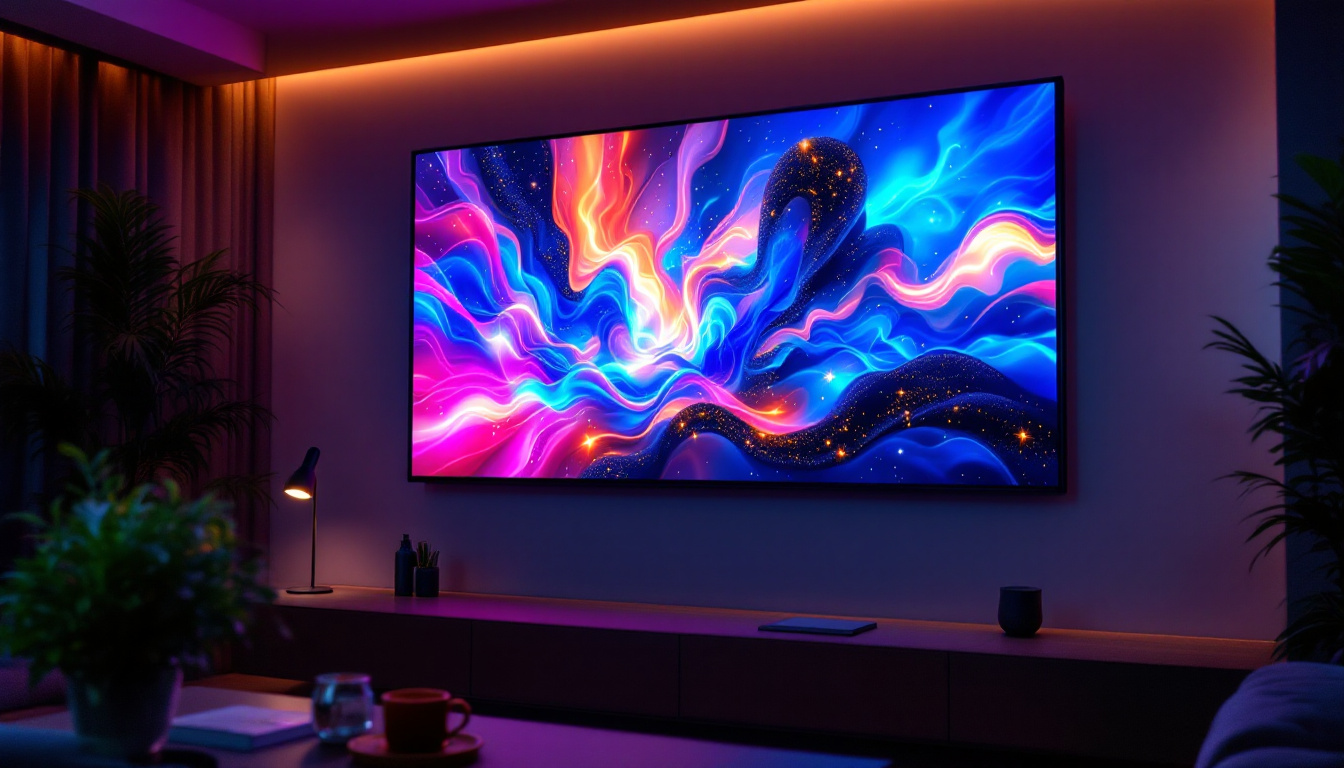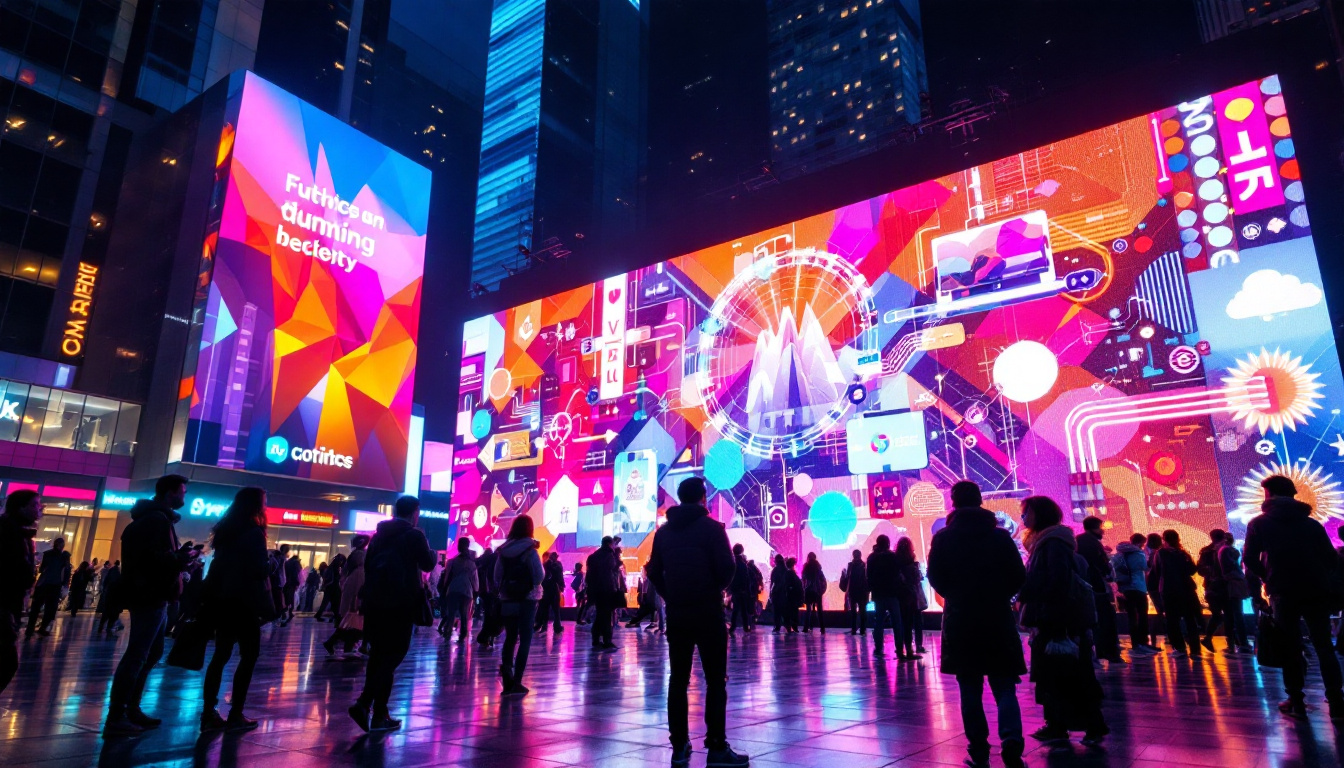Kiosk display stands have become an integral part of modern marketing and Information Dissemination. With the advancement in technology, LED displays have emerged as a popular choice for these kiosks, offering vibrant visuals and interactive capabilities. This article delves into the various aspects of kiosk display stands and the role of LED technology in enhancing their functionality.
Understanding Kiosk Display Stands
Kiosk display stands are freestanding structures designed to showcase information, advertisements, or interactive content. They are commonly found in high-traffic areas such as shopping malls, airports, and trade shows. The primary purpose of these kiosks is to engage users and provide them with essential information quickly and effectively.
Types of Kiosk Display Stands
There are several types of kiosk display stands, each tailored to specific needs and environments. Some of the most common types include:
- Information Kiosks: These kiosks provide users with information about products, services, or directions. They are often equipped with touch screens for user interaction.
- Advertising Kiosks: Primarily used for promotional purposes, these kiosks display advertisements and marketing content. They can be static or dynamic, depending on the technology used.
- Interactive Kiosks: These kiosks allow users to engage with the content through touch screens or other input methods, making them ideal for applications like ticketing or ordering.
Key Features of Kiosk Display Stands
When selecting a kiosk display stand, several key features should be considered to ensure it meets the intended purpose:
- Size and Portability: Depending on the location and usage, the size and portability of the kiosk can vary significantly. Some kiosks are designed to be easily moved, while others are more permanent installations.
- Durability: Kiosks are often placed in public areas where they are susceptible to wear and tear. Choosing materials that are durable and weather-resistant is crucial.
- Customization: Many kiosks can be customized to fit branding requirements, including color schemes, logos, and content management systems.
In addition to these features, the technology integrated into kiosk display stands has evolved significantly. Modern kiosks often include advanced software that can analyze user interactions, providing valuable data on customer preferences and behaviors. This data can be instrumental for businesses looking to tailor their marketing strategies or improve customer service. Furthermore, with the rise of contactless technology, many kiosks now offer payment solutions that enhance user convenience while ensuring safety, particularly in environments where hygiene is a concern.
Another important aspect to consider is the accessibility of kiosk display stands. It is essential for these structures to be designed with inclusivity in mind, ensuring that individuals with disabilities can easily use them. Features such as adjustable heights, audio assistance, and clear visual displays can greatly enhance the user experience for everyone. As businesses become more aware of the need for inclusivity, the demand for accessible kiosk designs is likely to increase, further driving innovation in this space.
The Role of LED Displays in Kiosk Stands
LED displays have revolutionized the way information is presented in kiosk stands. They offer numerous advantages over traditional display technologies, making them a preferred choice for many businesses.
Advantages of LED Technology
LED displays come with a range of benefits that enhance the user experience and improve the effectiveness of kiosk displays:
- High Brightness and Clarity: LED displays are known for their exceptional brightness and clarity, making them easily visible in various lighting conditions. This is particularly important in outdoor environments where sunlight can wash out other types of screens.
- Energy Efficiency: Compared to traditional LCD or plasma displays, LED technology consumes significantly less power, making it a more sustainable option for businesses.
- Longevity: LED displays have a longer lifespan than many other display technologies, reducing the need for frequent replacements and maintenance.
Interactive Capabilities
Modern LED displays can be integrated with touch technology, transforming traditional kiosks into interactive platforms. This interactivity allows users to engage with the content actively, leading to a more immersive experience. Businesses can utilize this feature for:
- Product Demos: Users can interact with product features, enhancing understanding and interest.
- Surveys and Feedback: Gathering user feedback becomes seamless, allowing businesses to adapt their offerings based on real-time data.
- Navigation and Wayfinding: Interactive maps and directories help users find their way around large spaces, such as malls or airports.
Furthermore, the integration of advanced software with LED displays allows for dynamic content management. Businesses can update their messaging and promotions in real-time, ensuring that the information displayed is always relevant and timely. This capability is particularly beneficial for industries such as retail and hospitality, where trends and customer preferences can shift rapidly. Additionally, the ability to schedule content based on time of day or specific events enables businesses to tailor their communication strategies, maximizing engagement with potential customers.
Moreover, the durability of LED displays makes them ideal for high-traffic areas where they are subject to wear and tear. Many models are designed to withstand harsh environmental conditions, including extreme temperatures and moisture, ensuring consistent performance. This resilience not only reduces maintenance costs but also enhances the overall reliability of kiosk stands, allowing businesses to maintain a professional appearance and provide uninterrupted service to their customers.
Applications of Kiosk Display Stands with LED Technology
The versatility of kiosk display stands equipped with LED technology allows them to be used in various industries. Here are some notable applications:
Retail Environments
In retail settings, kiosk display stands serve multiple purposes, from advertising promotions to providing product information. Retailers can utilize LED kiosks to:
- Showcase New Arrivals: Highlighting new products or collections can attract customer attention and drive sales.
- Provide In-Store Navigation: Helping customers locate specific products within the store enhances their shopping experience.
- Run Promotions: Dynamic advertisements can be updated in real-time, ensuring that customers are aware of current deals and offers.
Healthcare Facilities
Healthcare facilities benefit from kiosk display stands in several ways. These kiosks can streamline operations and improve patient experiences:
- Patient Check-In: Kiosks can facilitate self-check-in processes, reducing wait times and improving efficiency.
- Information Dissemination: Providing patients with information about services, procedures, and health tips can enhance their understanding and comfort.
- Wayfinding: Interactive kiosks can guide patients and visitors through complex hospital layouts, ensuring they reach their destinations without confusion.
Education and Training
Kiosk display stands are also valuable tools in educational institutions and training environments. They can be used to:
- Deliver Educational Content: Interactive kiosks can present lessons, quizzes, and other educational materials in an engaging format.
- Facilitate Skill Development: Training programs can utilize kiosks for hands-on learning experiences, allowing users to practice skills in a controlled environment.
- Provide Information on Courses: Prospective students can learn about available courses and programs through interactive displays.
Design Considerations for Kiosk Display Stands
Designing an effective kiosk display stand requires careful consideration of various factors to ensure it meets user needs and enhances the overall experience.
User Experience (UX)
The user experience should be at the forefront of kiosk design. Here are some key elements to consider:
- Intuitive Interface: The interface should be user-friendly, allowing individuals of all ages and technical abilities to navigate easily.
- Accessibility: Kiosks should be designed to accommodate users with disabilities, ensuring that everyone can access the information provided.
- Engaging Content: The content displayed should be visually appealing and relevant to the target audience, capturing their attention and encouraging interaction.
Location and Placement
The placement of kiosk display stands is crucial for maximizing visibility and interaction. Consider the following:
- High Traffic Areas: Positioning kiosks in locations with high foot traffic increases the likelihood of user engagement.
- Visibility: Ensure that the kiosks are easily visible from a distance, with optimal lighting to enhance display clarity.
- Accessibility: Kiosks should be placed at an appropriate height and angle for easy access by all users.
Future Trends in Kiosk Display Technology
The future of kiosk display stands, particularly those utilizing LED technology, is promising. As technology continues to evolve, several trends are emerging that will shape the future of kiosks.
Integration with AI and Machine Learning
Artificial intelligence (AI) and machine learning are set to revolutionize the capabilities of kiosk display stands. These technologies can enable kiosks to:
- Personalize User Experiences: By analyzing user behavior and preferences, kiosks can offer tailored content and recommendations.
- Improve Customer Support: AI-driven chatbots can provide instant assistance, answering user queries and guiding them through processes.
- Optimize Content Management: Machine learning algorithms can analyze engagement data to determine which content performs best, allowing for continuous improvement.
Enhanced Interactivity
As technology advances, the interactivity of kiosks is likely to increase. Future kiosks may feature:
- Gesture Recognition: Users may interact with kiosks through gestures, eliminating the need for physical touch and enhancing hygiene.
- Augmented Reality (AR): Integrating AR technology can provide immersive experiences, allowing users to visualize products or information in a more engaging manner.
- Voice Activation: Voice-activated kiosks will allow users to interact without needing to touch the screen, making the experience more intuitive.
Conclusion
Kiosk display stands equipped with LED technology offer a dynamic and engaging way to communicate with users across various industries. Their versatility, combined with the benefits of LED displays, makes them an essential tool for businesses looking to enhance customer engagement and streamline information dissemination.
As technology continues to evolve, the potential for kiosk display stands will only grow, paving the way for more innovative applications and enhanced user experiences. By understanding the various aspects of kiosk displays and staying abreast of emerging trends, businesses can leverage these tools to their fullest potential, ensuring they remain at the forefront of their industries.
Discover Cutting-Edge LED Display Solutions with LumenMatrix
Ready to elevate your kiosk display stands with the latest in LED technology? Look no further than LumenMatrix, a pioneer in crafting visually stunning and technologically advanced LED display modules. From indoor and outdoor LED walls to innovative solutions like vehicle displays, sports displays, and even custom configurations, LumenMatrix is at the forefront of revolutionizing visual communication. Embrace the future of digital signage and create unforgettable visual experiences that captivate your audience. Check out LumenMatrix LED Display Solutions today and transform how you share your message with the world.

